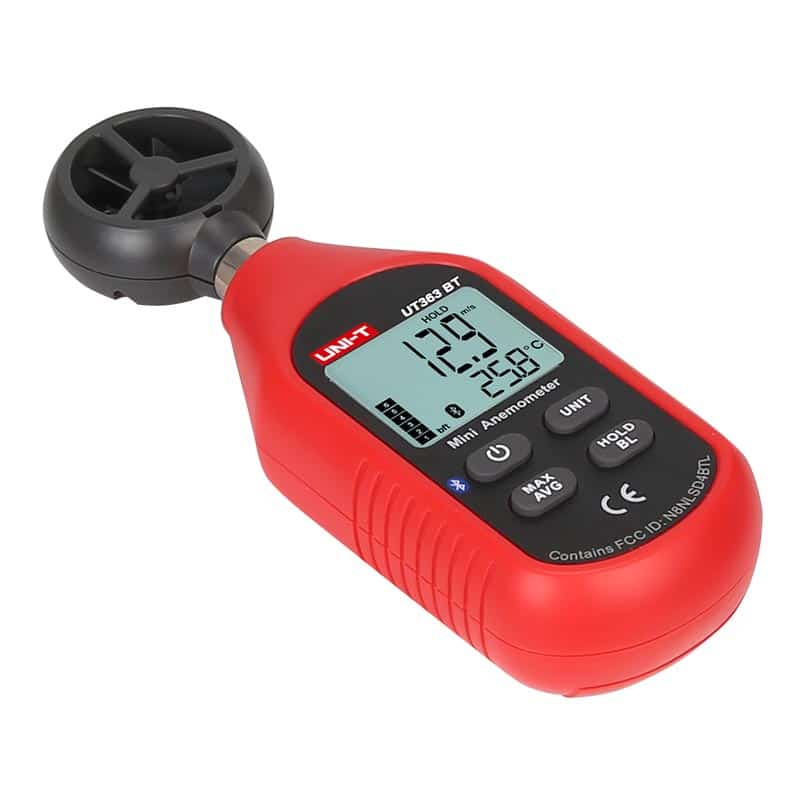Recognizing Different Sorts Of Anemometers for Different Applications
Exploring the Functions and Advantages of Anemometers for Climate Lovers and Specialists
Anemometers stand as important tools in the realm of climate surveillance, dealing with both fanatics and experienced professionals alike. These devices offer a window into the dynamic world of wind patterns and rates, offering very useful data for meteorological analysis and projecting. From mug anemometers to sonic anemometers, each type brings its distinct set of benefits and applications, dropping light on different elements of weather. As we look into the functions and benefits of anemometers, a much deeper understanding emerges not only of dominating climate sensations however also of the wider effects for sectors like wind power manufacturing and environmental research.
Value of Anemometers in Climate Surveillance
Anemometers play a crucial role in weather condition monitoring by providing exact dimensions of wind rate, aiding in forecasting and understanding weather patterns. These tools, ranging from standard cup anemometers to modern ultrasonic anemometers, are important for meteorologists, researchers, and climate fanatics alike. By determining wind speed, anemometers aid in establishing the strength of climate phenomena such as twisters, storms, and storms. In addition, they provide beneficial information for aviation, maritime operations, and numerous markets that are sensitive to wind problems.

Types of Anemometers and Their Applications
The most typical types of anemometers consist of mug anemometers, vane anemometers, hot-wire anemometers, and ultrasonic anemometers. Mug anemometers are composed of three or 4 mugs installed on straight arms that turn with the wind, measuring its rate. Vane anemometers, on the other hand, utilize an easily revolving vane to straighten with the wind instructions, providing both wind rate and direction dimensions.
Cup anemometers are suitable and robust for basic climate surveillance, while vane anemometers are preferred for directional dimensions. Ultrasonic anemometers are non-intrusive and supply high precision, usually made use of in research study and specialized weather condition tracking applications.
Advantages of Utilizing Anemometers in Projecting
In weather forecasting, the utilization of anemometers supplies indispensable benefits for improving the precision of weather condition projecting. Anemometers gauge wind speed and instructions, providing important information for predicting weather patterns. By incorporating wind information right into forecasting models, meteorologists can better recognize the activity of weather systems, anticipate adjustments in climatic problems, and issue a lot more accurate forecasts.
Moreover, anemometers play a vital role in analyzing prospective weather condition threats. Monitoring wind speeds assists forecasters forecast serious weather condition occasions such as storms, hurricanes, and winter months storms with higher accuracy. This early caution system makes it possible for authorities to issue timely alerts and execute essential precaution, decreasing the risks to life and building.
In addition, anemometers aid in enhancing sustainable energy manufacturing. By analyzing wind patterns, meteorologists can recognize appropriate areas for wind ranches and anticipate power outcome, adding to the reliable generation of wind power.

Anemometers in Wind Power Manufacturing
Given the essential duty anemometers play in supplying precise wind data for climate forecasting and threat assessment, their relevance expands to the world of wind energy manufacturing. Anemometers are essential tools in the field of wind energy, where the measurement of wind rate and instructions is essential for figuring out the feasibility and performance of wind generator installments. By accurately measuring wind rates at differing heights, anemometers assist maximize the placement and design of wind turbines to maximize power result.
In wind farms, anemometers are tactically placed to accumulate real-time wind information that is utilized to examine the prospective energy manufacturing of a site. This information is important in figuring out the financial stability of wind power jobs and in projecting energy generation to make certain grid security. In addition, anemometers help in checking wind problems to maximize generator performance, avoid damage from high winds, and make sure the security of personnel functioning in the location of wind turbines.
Enhancing Climate Comprehending With Anemometers

Anemometers play a vital role in improving our understanding of microclimates. These localized More Info climate condition can vary substantially from more comprehensive regional projections, making it important to have exact data for details areas. anemometer. By strategically putting anemometers in numerous locations, researchers can collect detailed info on just how wind behaves in various terrains, metropolitan atmospheres, or bodies of water
Furthermore, anemometers contribute to boosting weather condition projecting models by providing real-time data Resources on wind actions. This info is especially important for anticipating extreme weather condition occasions, optimizing farming techniques, and sustaining markets like aeronautics and maritime navigation. Generally, anemometers are invaluable tools that enable us to delve deeper into the intricacies of weather condition systems, eventually bring about more precise predictions and better-informed choices.
Conclusion
In conclusion, anemometers play a crucial role in weather tracking and projecting by gauging wind speed and direction. Anemometers additionally have applications in wind power production, further highlighting their significance in both weather forecasting and renewable energy fields.
From mug anemometers to sonic anemometers, each type brings its special set of applications and benefits, dropping light on various elements of atmospheric conditions. These instruments, varying from typical mug anemometers to modern ultrasonic anemometers, are essential for meteorologists, researchers, and weather enthusiasts alike. The most common kinds of anemometers include cup anemometers, vane anemometers, hot-wire anemometers, and ultrasonic anemometers. Mug anemometers are suitable and robust for general weather condition monitoring, while vane anemometers are preferred for directional measurements. Anemometers are vital tools in the field of wind power, where the dimension of wind rate and instructions is critical read this for determining the expediency and efficiency of wind generator installments.